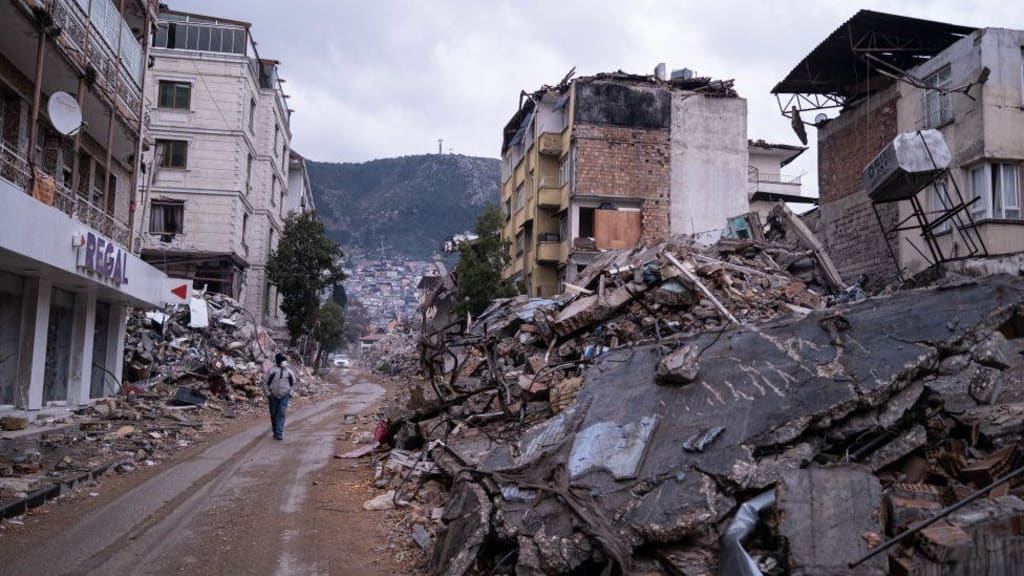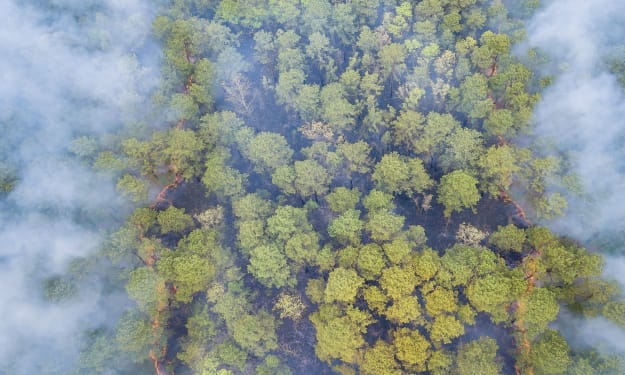Earthquakes
Earthquakes: Understanding the Causes and Consequences

An earthquake is a natural disaster that can strike anywhere in the world, at any time, and without warning. It is a sudden shaking of the Earth's surface caused by the release of energy from within the planet. These vibrations can be so powerful that they can cause serious damage to buildings, roads, bridges, and other infrastructure, and even lead to loss of life. Earthquakes are one of the most destructive natural disasters, and they can occur with little to no warning.
Earthquakes are caused by the movement of tectonic plates, which are large pieces of the Earth's crust that float on top of the molten mantle layer. These plates can move against each other, pull apart, or collide, causing stress to build up along their boundaries. When the stress becomes too great, the plates suddenly shift, causing an earthquake.
The movement of tectonic plates is not a smooth process. They move in sudden, jerky movements, which can cause the ground to shake violently. The energy released during an earthquake travels in the form of seismic waves, which can be felt and measured by scientists using seismometers.
The magnitude of an earthquake is measured on the Richter scale, which ranges from 1 to 10. Each increase in magnitude represents a tenfold increase in the amount of energy released by the earthquake. For example, a magnitude 7 earthquake releases 10 times as much energy as a magnitude 6 earthquake, and 100 times as much energy as a magnitude 5 earthquake. The most powerful earthquake ever recorded was the Great Chilean earthquake in 1960, which had a magnitude of 9.5.
The consequences of an earthquake can be devastating, both in terms of human life and economic damage. Buildings can collapse, bridges can fail, and roads can be destroyed. Earthquakes can also trigger landslides, tsunamis, and volcanic eruptions, compounding the damage and destruction. The loss of life and property damage caused by earthquakes can have long-lasting effects on affected communities.
One of the most important steps in mitigating the impact of earthquakes is to understand the risks and vulnerabilities of different regions. Some areas are more prone to earthquakes than others, such as the Pacific Ring of Fire, which encircles the Pacific Ocean and is the location of many of the world's most powerful earthquakes.
In areas prone to earthquakes, building codes and engineering standards must be designed to withstand the forces of an earthquake. This includes building structures that are flexible enough to absorb the energy of the earthquake and strong enough to resist collapse. Techniques such as base isolation and damping can be used to make buildings more resistant to earthquakes.
Another important strategy is to prepare emergency plans that can be activated quickly in the event of an earthquake. This includes training emergency responders, stockpiling supplies such as food and water, and establishing communication networks that can be used to coordinate response efforts. Early warning systems can also be established to provide advanced notice of impending earthquakes, allowing people to take protective measures and evacuate if necessary.
Despite our best efforts, however, earthquakes remain a natural disaster that we cannot fully predict or prevent. As such, it is important to remain vigilant and prepared, and to continue to invest in research and technology that can help us better understand and mitigate the risks of earthquakes.
Scientists are constantly working to improve our understanding of earthquakes and their causes. They use seismometers to detect and measure earthquakes, as well as GPS technology to track the movements of tectonic plates. This research helps us to better understand how earthquakes occur and how we can prepare for them.
In recent years, new technologies have emerged that can help us detect earthquakes even
About the Creator
Emre Erkek
Abdullah Gul University
AGU-RAS (2022-2023)
AGU-UniBiotech (2022-2023)





Comments
There are no comments for this story
Be the first to respond and start the conversation.